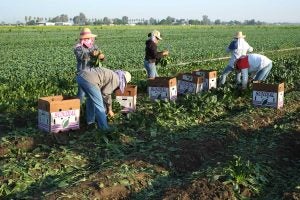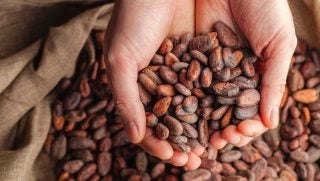As agriculture in the United States evolves, it’s becoming more intensive and less complex. That means larger fields, more cropland, and less crop diversity. In many cases, that means fewer crops in rotation as well.
Ecological theory generally holds that diversity promotes stability in biological systems. Ashley Larsen, an assistant professor at UC Santa Barbara’s Bren School of Environmental Science & Management, was curious how these tenets translate to agricultural landscapes, particularly with respect to crop pests.
Larsen and her colleague Frederik Noack, at the University of British Columbia, analyzed 13 years of data from Kern County, California — which consistently tops lists of the nation’s most valuable agricultural counties — and discovered that less diverse croplands led to greater variability in pesticide use as well as to higher peak pesticide application. Their findings appear in the journal Nature Sustainability.
The idea that greater diversity stabilizes an ecosystem emerged around the 1940s, relatively early in the development of ecology as a field. The theory has encountered some skepticism throughout the years, and there’s recently been a resurgence of interest in investigating this relationship.

Kern County provided a fantastic opportunity for the two researchers to study the phenomenon; in this case, how changes in crop and landscape diversity affect populations of crop pests.
“The U.S. has seen a shift toward larger agricultural enterprises,” said Larsen. “So instead of small family farms we now have much bigger agricultural conglomerates.” That has accompanied the trend of increasing field size and decreasing crop diversity. She suspects these all relate back to farmers taking advantage of the economy of scale. Her research did no delve into how these shifts have translated into food production, as biodiversity is often viewed as a tradeoff of high crop output and a stable food supply. The research also did not address farm-labor concerns.
Although Kern keeps extensive agricultural records, no one tracks the populations of pests, per se. This meant the researchers had to use a proxy: insecticide use. Only later did they appreciate how much this decision expanded the implications of their findings.
“Once you introduce insecticides into the study, then it’s not just about diversity and stability in this ecological theory,” Larsen said. “Now it has implications for environmental impacts and food security.”
Larsen and Noack scoured the county records from 2005 through 2017 focusing on factors such as field size, as well as the amount and diversity of croplands. What they saw seemed to sync with their predictions. “We find increasing cropland in the landscape and larger fields generally increase the level and variability of pesticides, while crop diversity has the opposite effect,” the authors wrote.
As field size increases, the area gets larger more quickly than the perimeter. This means that smaller fields have proportionally larger perimeters. And a larger perimeter may mean more spillover from nearby predators like birds, spiders and ladybugs that eat agricultural pests.
Smaller fields also create more peripheral habitat for predators and competitors that can keep pest populations under control. And since the center of a smaller field is closer to the edge, the benefits of peripheral land in reducing pests extends proportionally farther into the small fields.
Landscapes with diverse crops and land covers also correlated with reduced pesticide variability and overall use. Different crops in close proximity foster a variety of different pests. Though this may sound bad, it actually means that no single species will be able to multiply unimpeded.
“If agriculture is very simplified, there’s little stopping a big outbreak of one type of pest,” Larsen said. “If you’re a pest in a monoculture, and that’s your host crop, you have almost unlimited food resources.”
Larsen and Noack’s findings immediately suggest strategies for increasing food production while minimizing the impact of pesticides on human health and the environment. The study could not only help farmers make more informed decisions about field size and crop diversity, but also guide policy with the aim of decreasing insecticide use.
The U.S. Department of Agriculture’s Farm Service Agency oversees several conservation-related programs addressing a number of different issues, including habitat preservation. Larsen suggests that tailoring these efforts to the nuances of different crop types could provide even greater benefits.
What’s more, these voluntary programs currently focus on efforts by individual farmers. “Based on our results, we need to think, ideally, at more of a landscape scale,” Larsen said.


